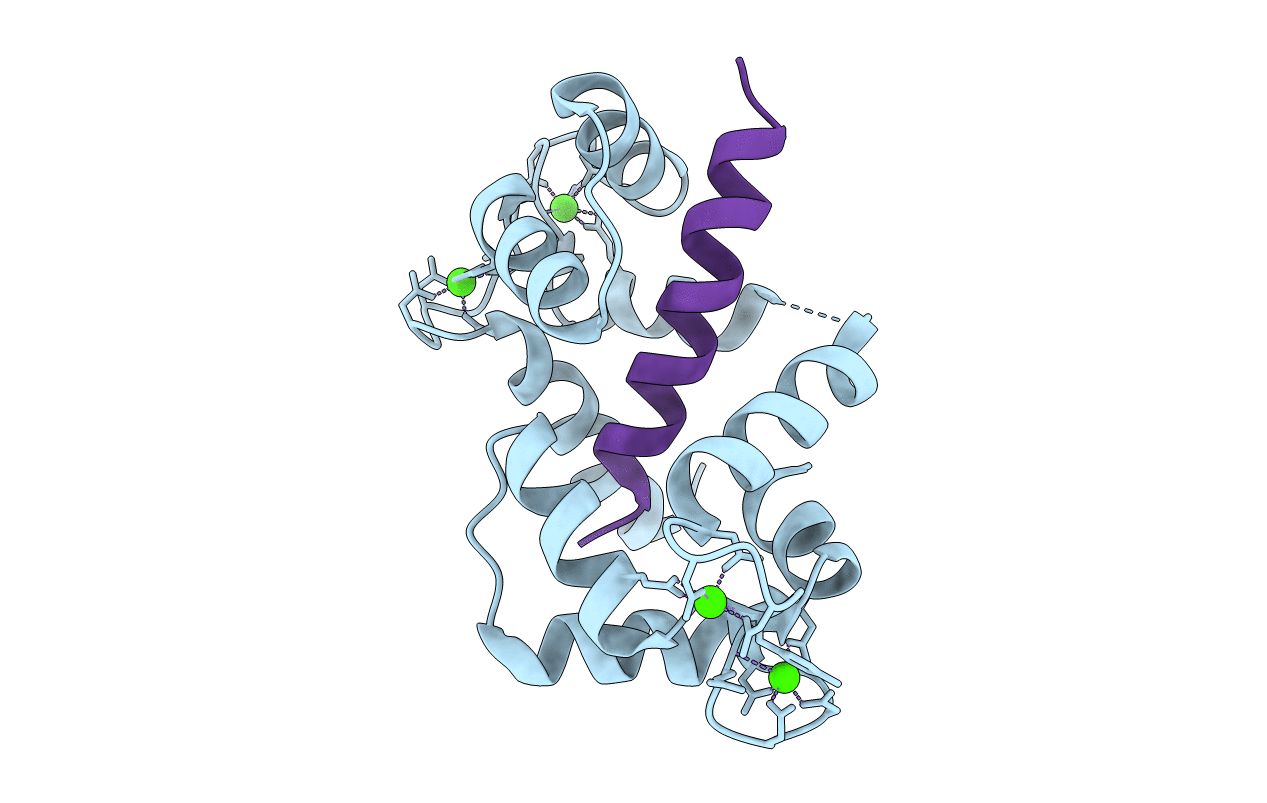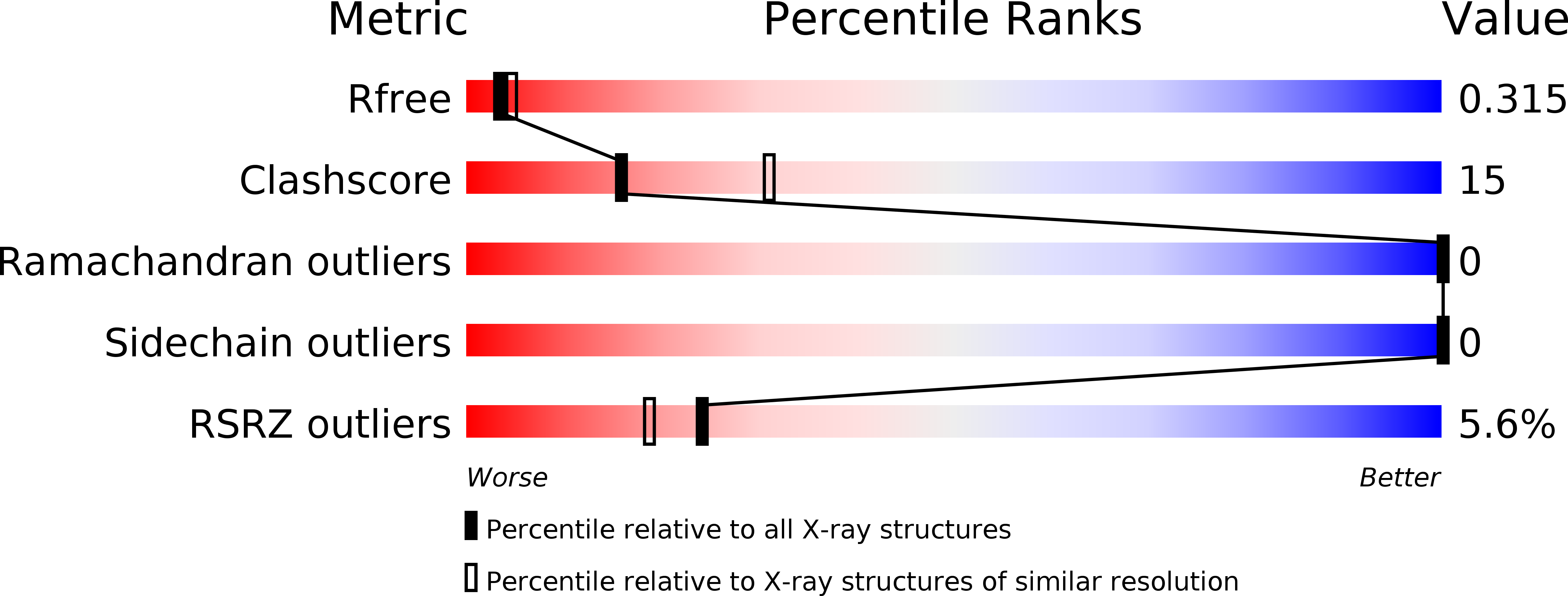
Deposition Date
2008-07-18
Release Date
2008-11-04
Last Version Date
2024-02-21
Entry Detail
PDB ID:
3DVM
Keywords:
Title:
Crystal Structure of Ca2+/CaM-CaV2.1 IQ domain complex
Biological Source:
Source Organism:
Homo sapiens (Taxon ID: 9606)
Oryctolagus cuniculus (Taxon ID: 9986)
Oryctolagus cuniculus (Taxon ID: 9986)
Host Organism:
Method Details:
Experimental Method:
Resolution:
2.60 Å
R-Value Free:
0.32
R-Value Work:
0.27
R-Value Observed:
0.27
Space Group:
P 61 2 2


